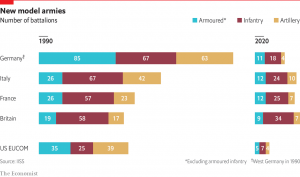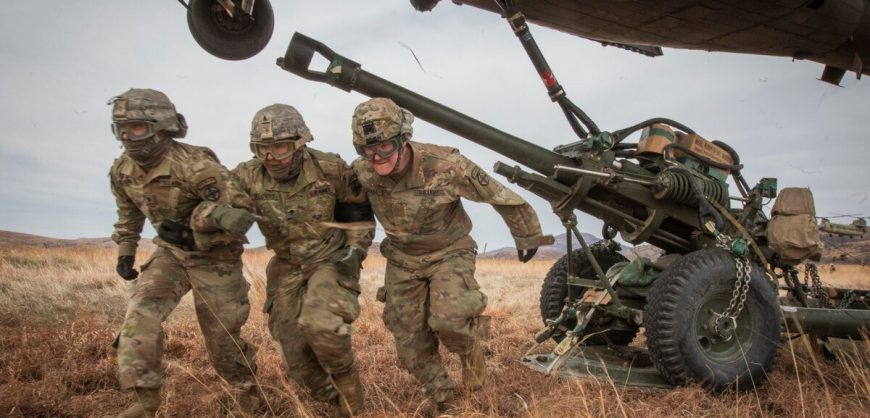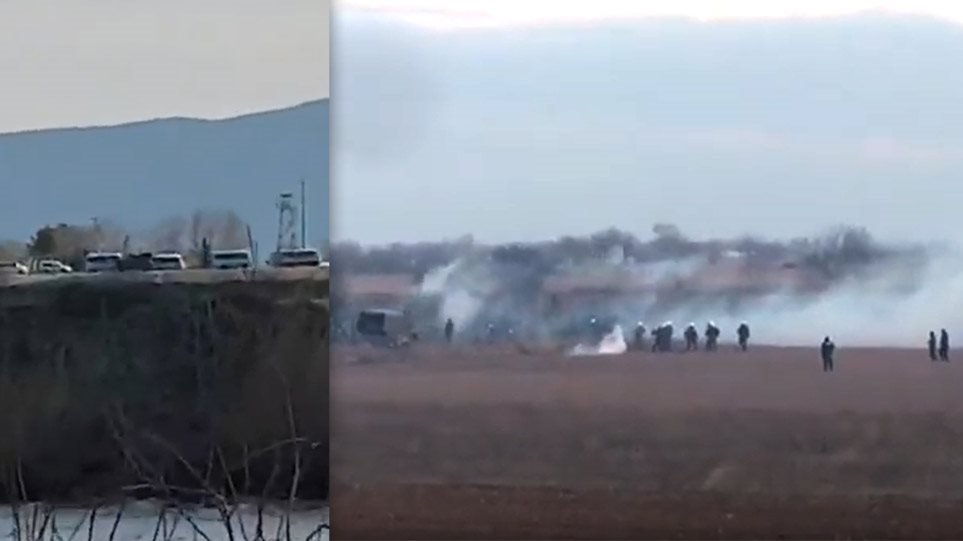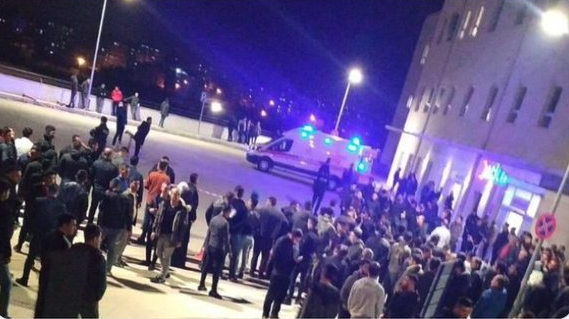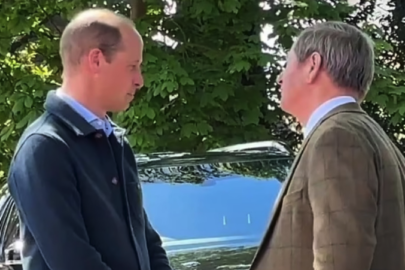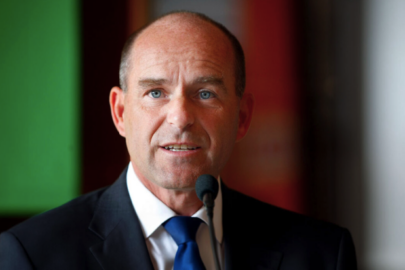A new report by the International Institute for Strategic Studies published by the The Economist magazine presents the dramatic dwindling of Europe’s military power after the end of the Cold War.
From the Economist article:
When the cold war ended, the West celebrated the peace dividend. Armies shrank, tanks were mothballed and money for defence dried up. American military spending fell from 5.3% of GDP in 1990 to 2.9% a decade later. But in Europe demobilisation went even further. Spending in western Europe slumped from an average of 2.4% to 1.6% of GDP, according to the Stockholm International Peace Research Institute (SIPRI), a think-tank, and continued to slide even after al-Qaeda’s attacks on America on September 11th 2001. A new report by the International Institute for Strategic Studies, another think-tank, shows the dramatic effect that had on Europe’s military might.
In 1990 West Germany alone was able to field 215 combat battalions (a battalion typically has a few hundred soldiers, and slots into a larger brigade). By 2015, even with Germany reunited, that had fallen to 34, a remarkable 84% cut. The number of Italian battalions fell by 67% and British ones by almost half. “To a significant degree Europeans remain dependent on US military capabilities for their defence,” concludes IISS. But American troops, who defended Europe’s frontier with the Warsaw Pact in huge numbers during the cold war, went home in droves afterwards. American forces in Europe shrank from 99 battalions to a paltry 14—from half a million troops to 76,000 today (which is still more than all but seven European NATO allies).
more at economist.com
